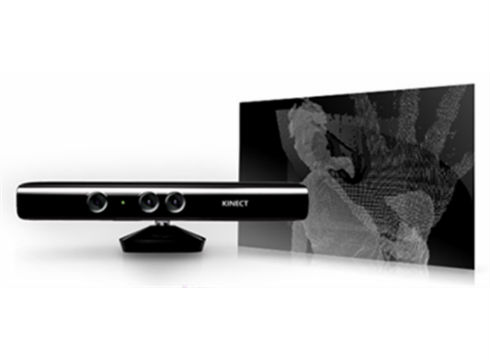Microsoft’s Xbox One launch overshadowed news that could have a potentially huge impact on the company’s efforts to mainstream gesture-based computing: the availability of Kinect for Windows v2 Developer Preview kits.
The kit includes a pre-release version of the new Kinect sensor, essentially the same upgraded motion controller hardware that is bundled with the Xbox One.
New sensor
 Participants in the programme are also entitled to the final version of Kinect for Windows v2 sensor when it goes on sale next summer. “Thousands of developers” have been selected for the programme, according to Microsoft.
Participants in the programme are also entitled to the final version of Kinect for Windows v2 sensor when it goes on sale next summer. “Thousands of developers” have been selected for the programme, according to Microsoft.
Microsoft has high hopes for the new Kinect. Its predecessor became a hit with the hacker community soon after it was released. Featuring low-cost, relatively feature-rich sensor technology from Tel Aviv-based PrimeSense, which Apple just acquired for $350 million (£220m), it spawned several projects, including self-navigating robots and 3D scanners. The company provided 3D scanning support with the release of the Kinect for Windows software development kit (SDK) 1.7 on 18 March.
In October, Microsoft Research Asia showcased Kinect Sign Language Translator. The project, still in its early stages, translates sign language into speech, and vice versa. “There are more than 20 million people in China who are hard of hearing, and an estimated 360 million such people around the world, so this project has immense potential to generate positive social impact worldwide,” Guobin Wu, research programme manager for Microsoft Research Asia, said in a blog post.
The new Kinect should help developers and other tech enthusiasts push the technology even further. “Microsoft believes that the opportunities for revolutionising computing experiences will be even greater with this new sensor,” stated the company.
Earlier this year, the company unveiled its latest vision of pervasive computing by opening the Envisioning Centre at its Redmond, Washington campus. Several Kinect-powered attractions depict users interacting with technology using touch-screens, gestures and their own voices without a PC keyboard in sight.
Kinect Real Vision
Kinect 2 and its new capabilities, the company hopes, may lead to innovations with the potential to impact several industries. “The benefits will raise the bar and accelerate the development of NUI [natural user interface] applications across multiple industries, from retail and manufacturing to health care, education, communications and more,” said Microsoft.
Enhancements include Kinect Real Vision technology, which provides an expanded field of view for better line of sight and employs three-dimensional geometry to make fine-grained determinations about its environment. An always-on infrared camera (IR) allows the hardware to “see in the dark”.
Kinect Real Motion delivers “precise control over an application” due to its ability to detect subtle gestures. Kinect Real Voice leverages the hardware’s new multi-microphone array to provide advance noise isolations, and enable the sensor to pick out users and their voice commands in a crowd.
Do you know all about the Internet of Things? Take our quiz.
Originally published on eWeek.





